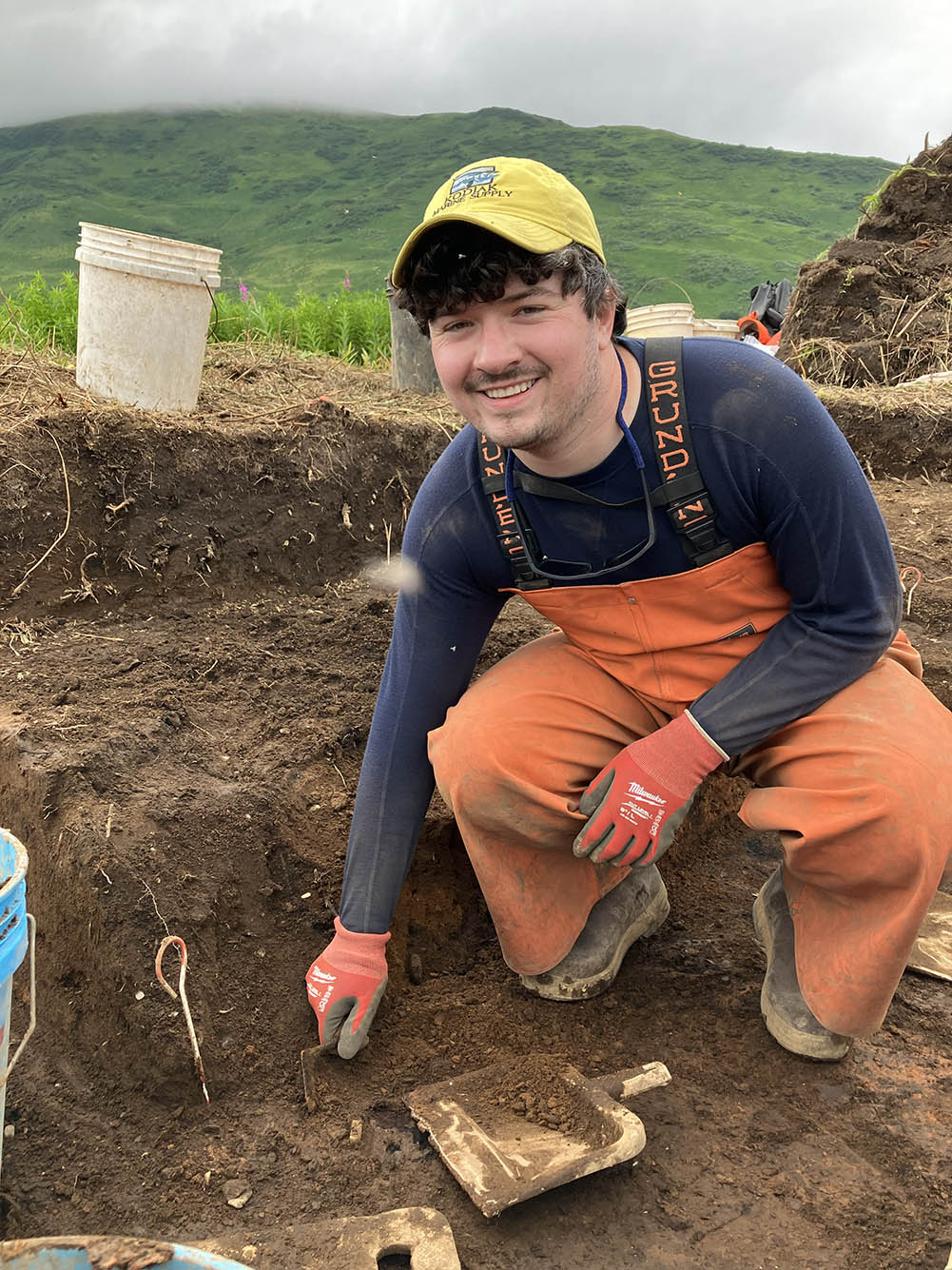CISS Grant Awardee (’22 ) Digs Up the Past on Alaska’s Kodiak Island
From above, Kodiak Island, off the southern coast of Alaska, looks pristine, with lush greenery and stunning mountains touching the clouds. As Boston University archaeology student Trevor Lamb glided over the island in a small 4-seat floatplane, he felt anticipation and awe. On the ground below, h e knew, were precious archaeological sites, rich with information about the past—and he was there to get his hands in the dirt.
e knew, were precious archaeological sites, rich with information about the past—and he was there to get his hands in the dirt.
Trevor Lamb (GRS’25) traveled from Boston to the city of Kodiak, then took a floatplane to a remote area of the island, where he joined a team brought together by the Alutiiq Museum and Archaeological Repository. Lamb worked on a plot of land where a house had stood about 3,200 years ago; he dug for details about how plants fit into the diets of indigenous hunter-gatherer ancestors.
The Alutiiq/Sugpiaq people have inhabited this part of Alaska for over 7,500 years, with historical records and artifacts revealing much about their lives—including the tools they used for hunting and fishing, how their homes were built, and much more. Lamb, a PhD student in Boston University Graduate School of Arts & Sciences anthropology department, is particularly interested in discovering details about the diet of their hunter-gatherer ancestors. Specifically, how plants fit into the diets of people who relied on meat and seafood for sustenance…
To read more, visit THE BRINK where this article originally appeared on October 26, 2023.